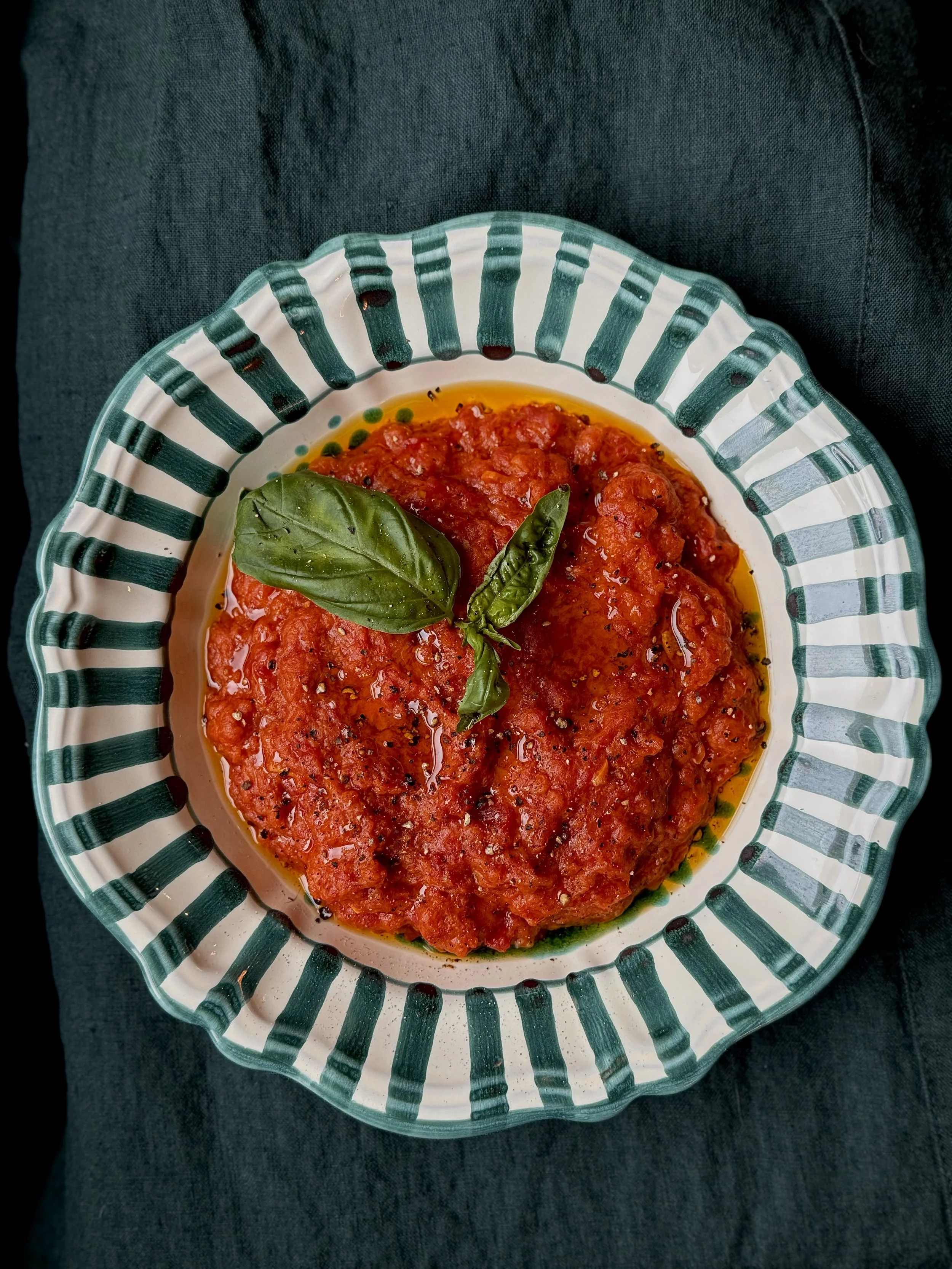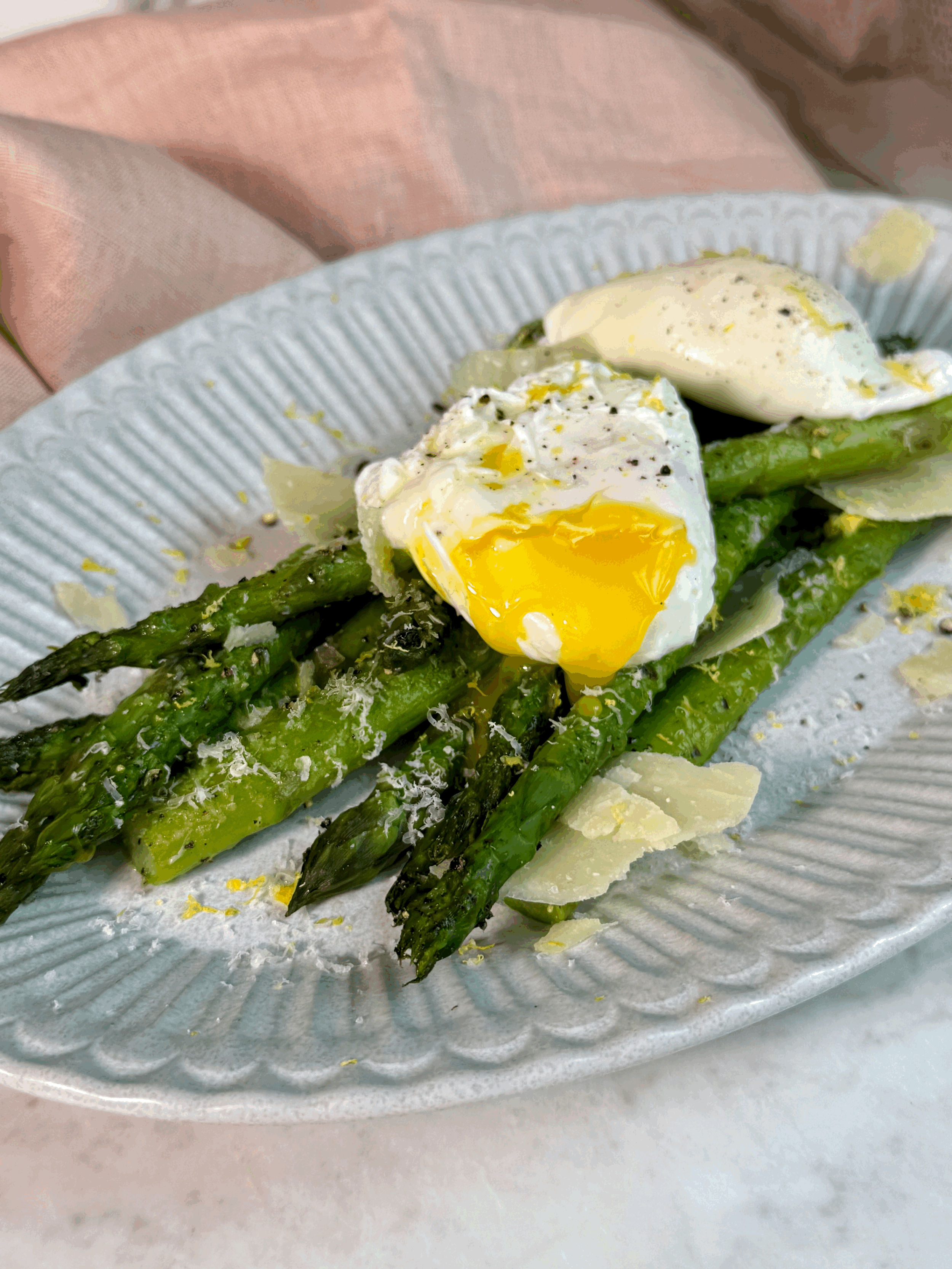Pappa al Pomodoro
SERVES: 4
The first time I tasted pappa al pomodoro was on an uncharacteristically snowy December evening in Florence. I had spent the day moving — boxes buckling, books tumbling, the rain-turned-snow soaking through everything, including my patience. By the time a dear friend arrived to whisk me away for dinner, I was chilled to the bone and felt the weariness a day of chaos leaves in its wake.
Guglielmo and I ducked into a small trattoria tucked just beyond the Ponte Vecchio — its name now lost to time, its warmth lives vividly in my memory. I remember the candlelight flickering against plaster walls, the quiet hum of conversation and clinking cutlery, and the bowl placed in front of me: a humble dish of tomato and bread, the generous drizzle of olive oil shimmering atop. I took a bite, and everything shifted. The tension of the day melted away. My friend, wide-eyed, watched as I devoured every last spoonful with unexpected fervor (and speed). Over 25 years later, that first bowl still lingers on my palate — my go-to when I need comfort, or simply a meal that feels like an embrace.
Pappa al pomodoro is quintessentially Tuscan, born from cucina povera, the tradition of transforming modest ingredients into something both soulful and satisfying. It’s not quite a soup, not quite a stew — its texture more akin to a savory custard, thickened by the generous use of torn stale bread. And though it’s often associated with summer, when gardens and markets overflow with ripe tomatoes, it’s a dish I find myself turning to year-round. Spring, in particular, is a perfect moment for it — when we begin to shed the weight of winter, but the air still carries the occasional chill.
The beauty of pappa al pomodoro lies in its simplicity. Garlic softened gently in olive oil, a hint of red chili pepper for warmth, crushed tomatoes simmered until rich and fragrant. Bread — Tuscan, unsalted, and stale — is torn by hand and folded into the sauce, coaxed into softness with good stock until the mixture becomes almost creamy. The finishing touches are key: a flourish of pepper, a scattering of torn basil, and — though nontraditional — a generous grating of Parmigiano-Reggiano. And always, always, a final drizzle of the very best extra virgin olive oil you have.
It’s a dish that tastes of place and memory. Of Italian summers and Florentine trattorias. Of generosity and thrift. Of snow in a city not built for it — and of something warm and perfect arriving just when you need it most.
INGREDIENTS
5-6 cups (approximately 6 ounces) stale, day-old rustic bread; crusts removed and torn or cut into 1-inch pieces
1 28-ounce can whole, peeled San Marzano tomatoes; crushed by hand, with juices reserved
2 cups homemade or high-quality, store bought chicken stock, plus more as needed; warmed
4 tablespoons extra-virgin olive oil, plus more for serving
3 medium cloves garlic; thinly sliced
2 sprigs fresh basil, plus additional for serving
3/4 teaspoon Kosher salt
Pinch red pepper flakes
Parmigiano-Reggiano; freshly grated
Freshly ground black pepper
METHOD
In a medium sauté pan or dutch oven, heat 4 tablespoons olive oil over medium heat until shimmering. Add garlic and red pepper flakes, stirring, until garlic just begins to turn golden, approximately 1-2 minutes. Add crushed tomatoes and juices. Stir in 1/4 teaspoon of salt and bring to a simmer.
Place 2 sprigs of basil leaves on top of tomatoes and let them sink into sauce as it simmers. Simmer for 15 minutes, stirring occasionally.
Discard basil sprigs. Add bread and one cup stock, stirring to combine. Simmer until bread has absorbed most of the stock, approximately 5-7 minutes, whisking occasionally to assist with breaking down the bread. Add remaining cup of stock, 1/2 teaspoon salt and continue to simmer, whisking occasionally, until bread is completely softened and soup has a porridge-like consistency, about 10-15 minutes. Season to taste with salt and pepper.
Remove from heat and allow to sit for about an hour before serving so flavors can deepen. Whisk once or twice to further break down the bread.
To Serve
When ready to serve, reheat if serving warm. Otherwise, ladle into wide, shallow bowls and finish with a generous drizzle of robust extra virgin olive oil and a hearty grind of black pepper. Garnish with a few fresh basil leaves over the top, and for added indulgence, scatter shavings of Parmigiano-Reggiano.
Buon Appetito!
NOTES
For the most aromatic finish, always use fresh basil. Dried basil lacks the vibrancy and depth this dish deserves and is not recommended as a substitute.
The soul of the dish lies in the tomatoes. True San Marzano tomatoes are naturally sweet and far less acidic than standard canned varieties—no need for added sugar. To ensure authenticity, look for the “DOP” designation on the label. If you’re using another variety and find them a bit tart, a small pinch of sugar will gently balance the flavors.
During the height of summer, when ripe tomatoes are overflowing on the counter, you can substitute fresh for canned. Use about eight very ripe plum tomatoes, peeled and chopped, in place of the canned. Their sun-kissed flavor brings a certain brightness to the dish.
Traditionally, pappa al pomodoro calls for pane toscano—Tuscany’s signature saltless bread. If you have it on hand, by all means, use it. However, a rustic Italian loaf or a crusty ciabatta makes a wonderful alternative and is far more accessible in most kitchens.
To make the dish vegetarian-friendly, simply substitute the chicken stock with a delicate vegetable broth or even lightly salted water — the result is equally comforting.
For a more refined presentation, you can blend the soup using a standard or immersion blender to achieve a silky, smooth consistency.
Leftovers can be stored in an airtight container in the refrigerator for up to three days. In fact, the flavors deepen and mellow with time—some say it’s even better the next day. When reheating, do so gently on the stovetop over low heat. If the soup has thickened too much, just stir in a splash of water or stock to loosen it to your desired consistency.







